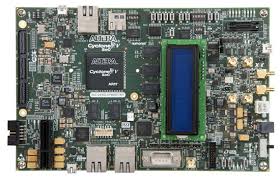White Paper: ARM SoCs for IoT Development
Introduction
ARM System on Chips (SoCs) have become the de facto standard for Internet of Things (IoT) devices due to their low power consumption, high performance, and versatility. This white paper will delve into the key features and benefits of ARM SoCs for IoT development, along with popular development kits and their applications.
Key Features of ARM SoCs for IoT
- Low Power Consumption: ARM SoCs are designed to operate efficiently on battery power, making them ideal for IoT devices that require long battery life.
- High Performance: ARM SoCs offer sufficient processing power to handle various IoT tasks, including data collection, processing, and communication.
- Versatility: ARM SoCs support a wide range of peripherals and interfaces, enabling their integration into diverse IoT applications.
- Security: ARM SoCs often include built-in security features to protect sensitive data and prevent unauthorized access.
- Ecosystem: ARM has a vast ecosystem of tools, software, and support resources available for developers.
Popular ARM SoC Development Kits
- Raspberry Pi: A well-known and affordable development board with various models, including the Raspberry Pi Pico (a microcontroller-based option) and the Raspberry Pi 4 (a more powerful SBC).
- Arduino MKR Series: A range of IoT-focused boards based on ARM Cortex-M microcontrollers, offering features like Wi-Fi, cellular connectivity, and environmental sensors.
- BeagleBone Black: A powerful development board with a Texas Instruments Sitara AM335x processor, suitable for more demanding IoT applications.
- NVIDIA Jetson Nano: A compact and powerful SBC with a quad-core ARM Cortex-A57 CPU and a dedicated GPU, ideal for AI and machine learning tasks.
- Adafruit Feather Series: A modular platform with various boards based on ARM Cortex-M microcontrollers, offering a wide range of features and connectivity options.
IoT Applications Using ARM SoCs
- Smart Home: Controlling lights, thermostats, security systems, and other home appliances.
- Wearable Devices: Fitness trackers, smartwatches, and hearables.
- Industrial IoT: Monitoring equipment, optimizing processes, and predictive maintenance.
- Smart Cities: Infrastructure management, traffic control, and environmental monitoring.
- Agriculture: Precision farming, livestock monitoring, and supply chain management.
Choosing the Right ARM SoC Development Kit
When selecting an ARM SoC development kit for your IoT project, consider the following factors:
- Processing Power: Determine the required computational resources based on your application's complexity.
- Connectivity: Choose a kit with appropriate wireless connectivity options (Wi-Fi, Bluetooth, cellular) for your IoT device.
- Power Consumption: Select a kit that meets your battery life requirements.
- Peripherals: Ensure the kit has the necessary peripherals (sensors, actuators, etc.) for your application.
- Ecosystem: Consider the availability of software libraries, tools, and community support for the chosen kit.
Conclusion
ARM SoCs are a versatile and powerful platform for IoT development, offering a wide range of benefits such as low power consumption, high performance, and a rich ecosystem. By carefully selecting the appropriate development kit, developers can create innovative and scalable IoT solutions.
References
- ARM Official Website: https://www.raspberrypi.com/
- Arduino Official Website: https://www.beagleboard.org/distros
- NVIDIA Jetson: https://www.adafruit.com/



